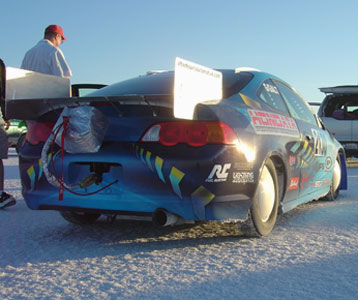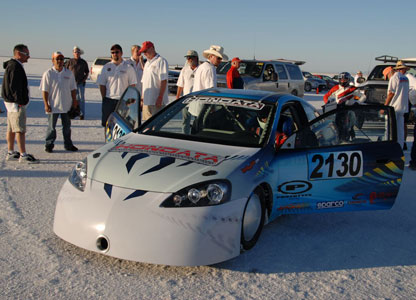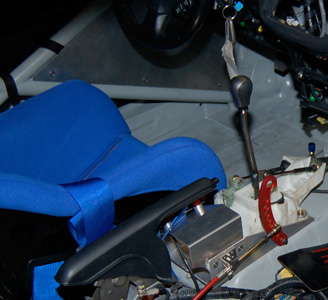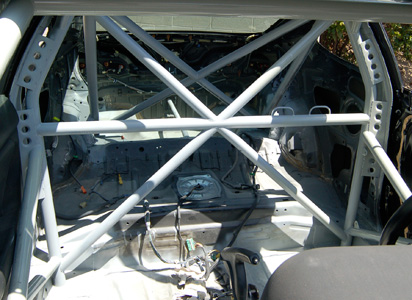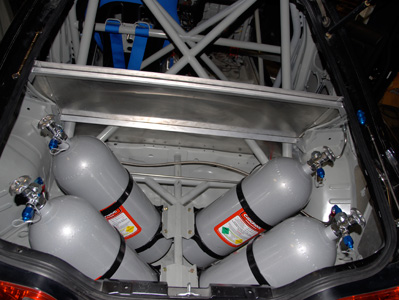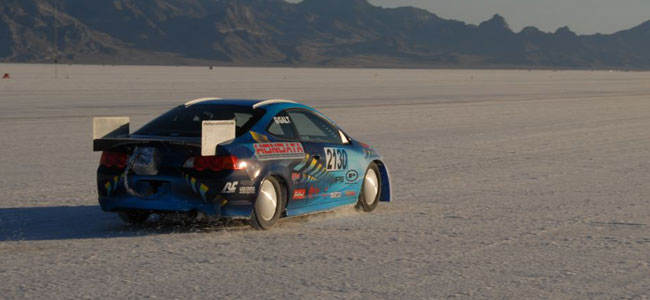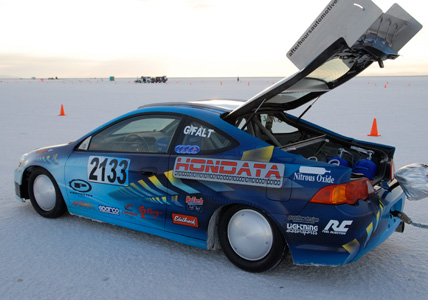project::2002 acura rsx
AfterHours/Hondata project Bonneville RSX
<
pass the salt
Hondata, manufacturers of Honda programmable performance ecu's, solicited us to build what hopefully would be a 200mph Acura
RSX. The car is a 2002 RSX which they brought to us stripped of the complete interior. They also removed all of the insulation tar
and ground the paint at all the pickup points which saved us lots of work (thanks Doug & Miriam). Before we started the project,
we consulted the SCTA rulebook to get the class specifications. The SCTA or Southern California Timing Association has been
organizing land speed events since the late 1940's. Many of the vehicles that compete for these records were manufactured from
the 1930's to the 1960's. Since most of the rules were written before the advent of unibody cars, some of them were unclear in
regards to our build. Luckily for us, there were a few very knowlegable people around willing to answer all of our questions.
The land speed racers are a tight knit community and some of the most helpful competitors I have ever met. Many thanks to all
for the help and advice.
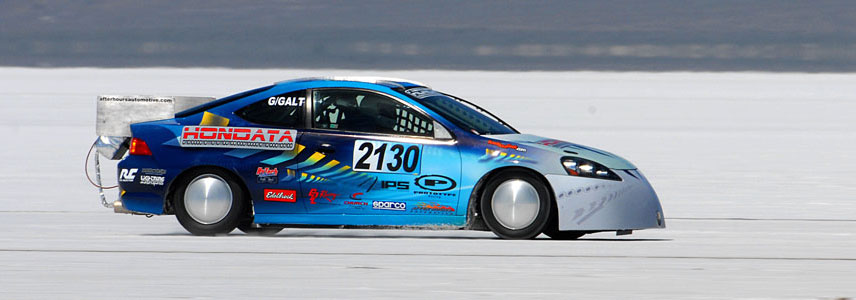
O.K. so we have our specs, now here's how we built the racecar. The cage consists of mostly 1 3/4" .095 wall chromoly tubing. The
rules specifically state that we had to have 1/4" thick steel plates attaching it to the floor. Since the floor on Hondas are very thin
(certainly not 1/4"), vertical gussets were fabricated to tie into the thicker
unibody rails. Plate gussets were also added at the A and
B-pillars for strength and chassis rigidity.
The cage is also fully x-braced and tube gusseted.
We also had to make provisions also for our driver to escape within fifteen seconds (timed).
Further safety equipment includes a full
fire system and driver restraints.
Aerodynamics play a huge roll in the pursuit of land speed records, so a full belly pan needed to be fabricated. Also,Hondata wanted to
run the car in four seperate classes with two sets of aero package rules. Two of the classes, G altered and G fuel altered, only allow what
is referred to as a step pan (flat from the firewall back to ten inches in front of the rear axle C/L). That meant that we had to fabricate
the flat bottom in three sections and be able to easily remove and install them at the salt. We also had to engineer some reenforced
areas in order to lift the car with jacks.
The cool looking aero nose section (only legal for G competition coupe) was fabbed with help from Steve Ritchie Styling Development.
The rear wing is adjustable and designed to work in conjunction with the underbody diffuser to provide downforce and minimize
drag. The parachute is tied directly to the cage and mounted strategically so it will launch up into the airstream.
Power for this land speed missile comes from a 2.0l NA (!) on spec gasoline for the gas classes and on race fuel with nitrous for the
fuel classes. Nitrous? Yup, thats right, four 20lb bottles (to prevent pressure drop along the four mile run). Check out our bottle
mounting system (straight out of the movies). The rules also required a firewall between the driver and the N2O which we fabbed out
of 5052 aluminum and sealed to the hatch (while still allowing it to open for access).
The motor was built by Joe at Prototype racing and features IPS K2 camshafts with a cylinder head worked by Tom at Portflow.
Of course, the engine management is handled by a Hondata K-Pro tuned by Doug Macmillan on Church Automotive's Dynapac dyno.
We added the cool Moon discs to the custom 4" steel wheels for aerodynamics and retro style (yeah, man).
Our first trip to the Bonneville salt flats was very productive. Doug set four records: G/GALT 167.346mph, G/GCC 167.988mph,
G/FALT 184.025mph and G/FCC 186.505. Top speed for the fuel class was 190.135mph and the gas 172.238 (records are the average
of two separate runs on the same course on consecutive days).
